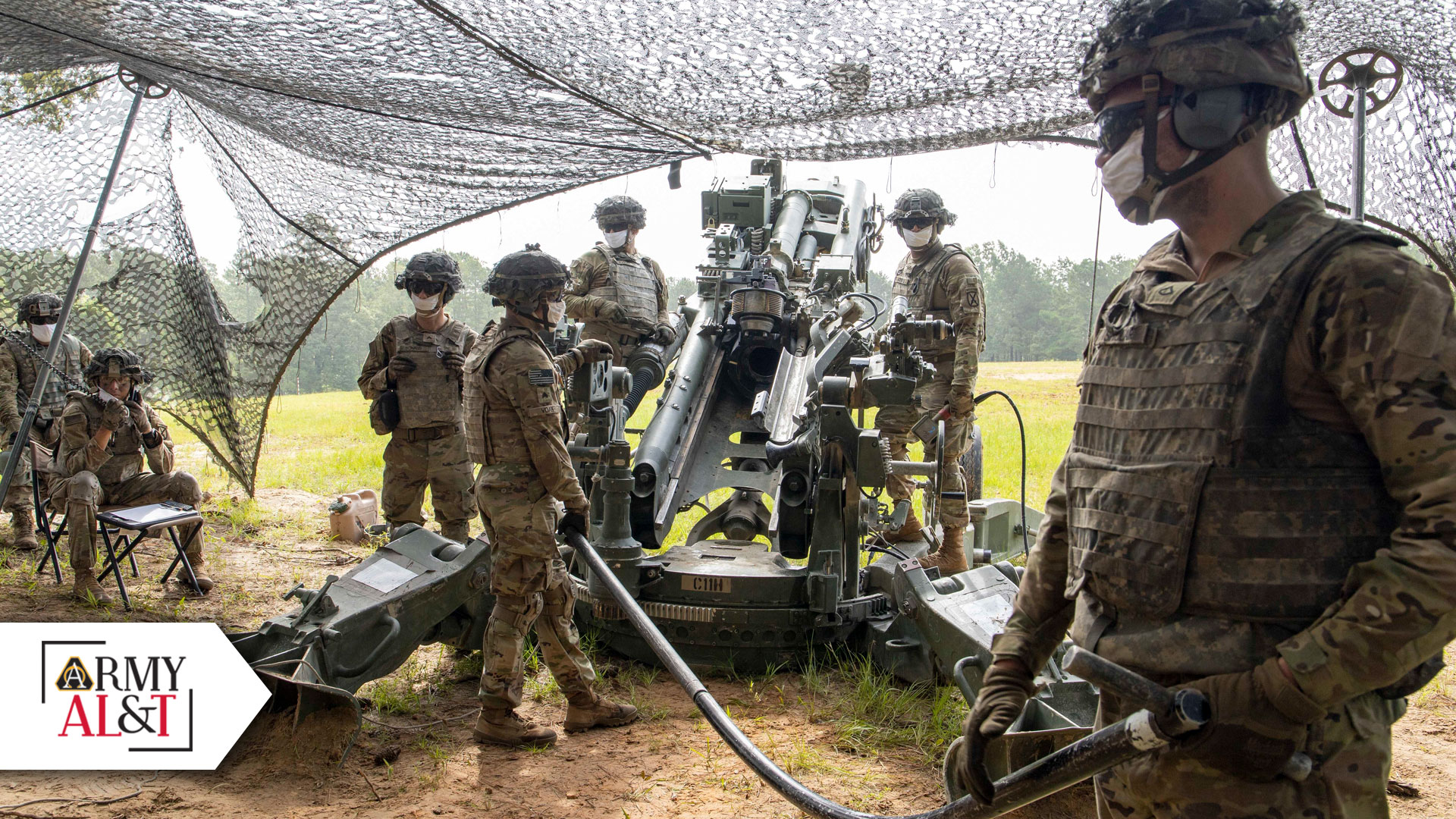
FOND FAMILIARITY: Soldiers assigned to 10th Mountain Division rehearse crew drills at Slagle training area, Fort Polk, Louisiana, in June before firing a M982A1 Excalibur precision munition from a M777 howitzer. The new, 70-km range projectile tested on YPG is quite similar to the one currently in use. (Photo by Staff Sgt. Ashley M. Morris, 3-10 BCT)
PM CAS showed how an existing munition system could be pushed to meet an important Army modernization priority.
by Lt. Col. Thomas Jagielski
The Project Manager for Combat Ammunitions Systems (PM CAS) conducted the first successful U.S. test of a 70-kilometer (km), or 43-mile, shot with a precision-guided munition on Dec. 19 at Yuma Proving Ground, Arizona. This is the first U.S. Army 155 mm projectile not assisted by a rocket, to achieve this distance with accuracy.
This successful demonstration represents an early win for the Long Range Precision Fires Cross-Functional Team and the Joint Program Executive Office for Armaments and Ammunition (JPEO A&A) by using a low-risk, high-payoff approach.
The live fire demonstration used the 155mm Excalibur projectile from the U.S. stockpile and was the culmination of a campaign of learning on multiple systems. That campaign, which started in late 2018, was critical to understanding the interaction and limitations of the new 58-caliber Extended Range Cannon Artillery (ERCA), new propellant and the existing M982 Excalibur projectile. PM CAS and the Long-Range Precision Fires Cross-Functional Team needed to understand whether the existing Excalibur projectile could be safely fired from the ERCA system and defeat a point target at 70 km.
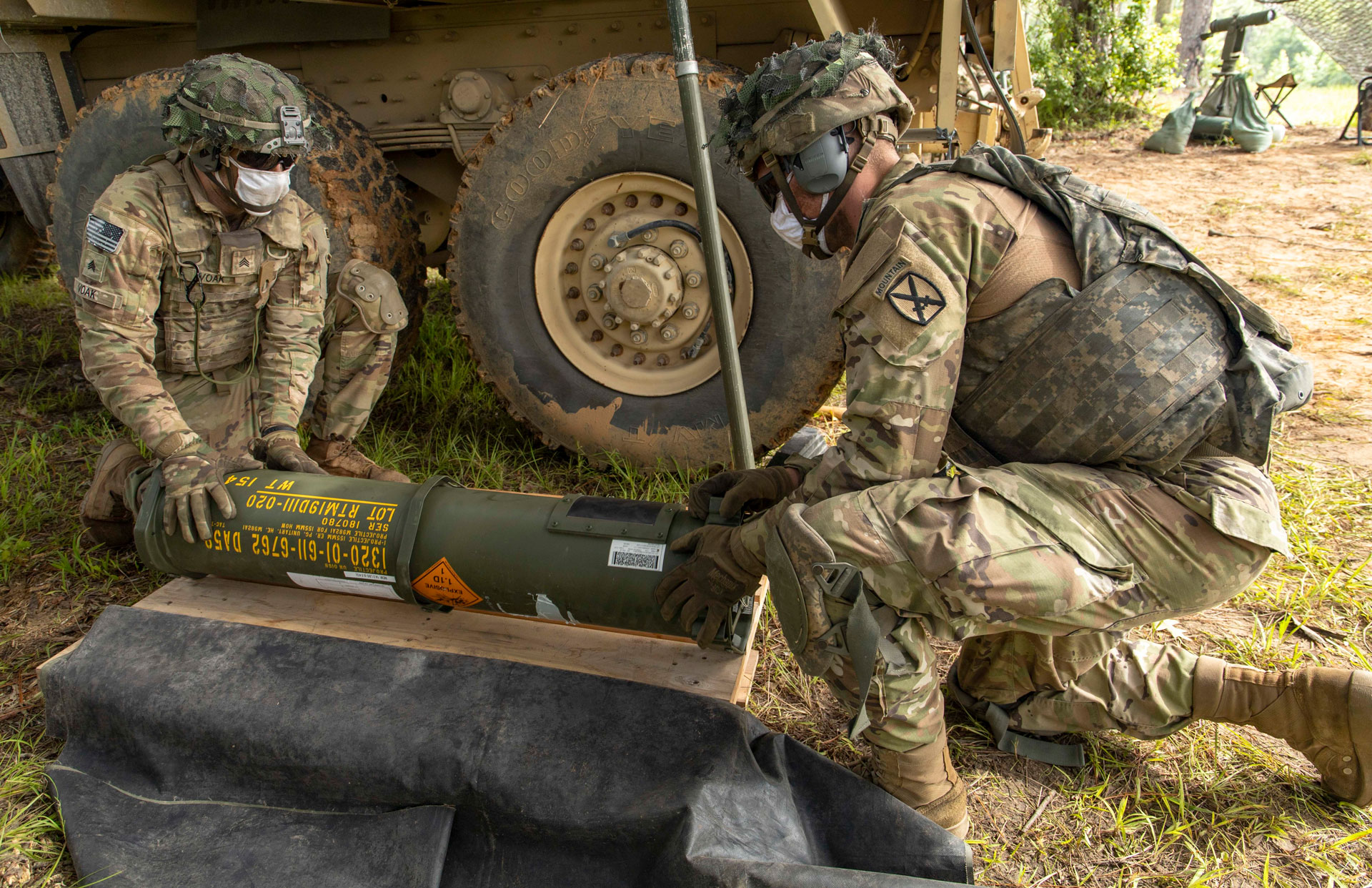
IN THE FIELD: Soldiers of 10th Mountain Division assist with preparing a M982A1 Excalibur for a live fire event on Fort Polk, Louisiana, in June. (Photo by Staff Sgt. Ashley M. Morris, 3rd Brigade Combat Team, 10th Mountain Division)
ACCUMULATE KNOWLEDGE
The undertaking was a joint effort that brought together PM CAS, the U.S. Army Combat Capabilities Development Command – Armaments Center and industrial partners to identify, understand and reduce risks for each system within the Excalibur, as well as the cumulative risk caused by interaction among systems. Higher muzzle velocities are required to extend the range. This is achieved by increasing the pressure in the chamber and cannon as well as increasing the length of the cannon, thereby increasing the amount of time the projectile is exposed to the increased pressure.
Currently fielded 39-caliber systems that use the Modular Artillery Charge System have maximum ranges that vary by projectile from 20 to 30 km. Potential adversaries over the past two decades have increased their cannon artillery capability to achieve ranges of 70 km. In order to engage targets at greater ranges, U.S. forces are compelled to engage with rockets, missiles or close air support. This demonstration is a large step toward regaining superiority with cannon artillery systems and freeing up assets to address other targets at even longer ranges.
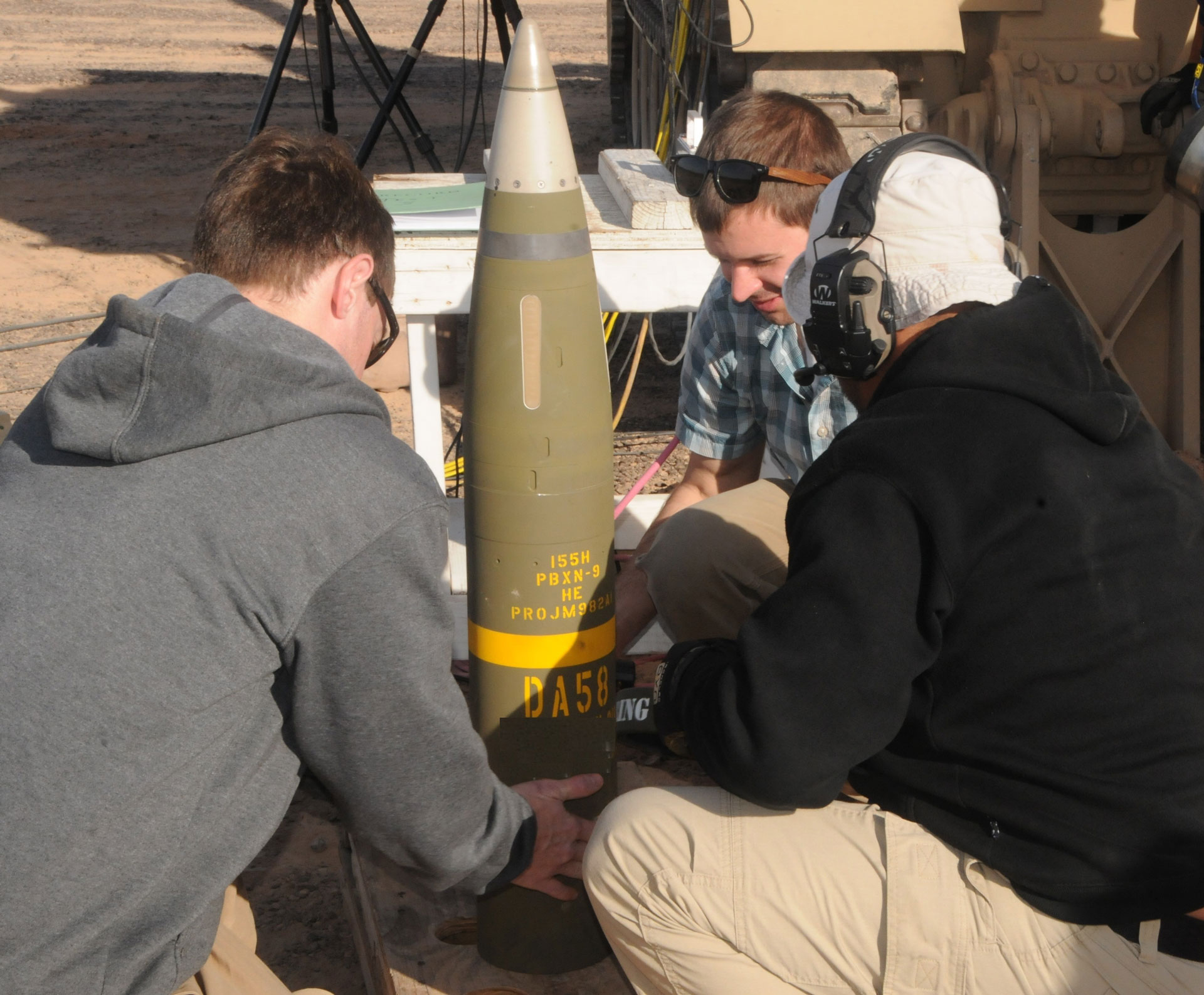
A CLOSER INSPECTION: Before firing the projectile from the ERCA during the landmark testing event in December, members of the test team inspect the item. (Photo by Ana Henderson, Yuma Proving Ground)
“Not only did the test show the design robustness of a currently fielded Excalibur projectile to demonstrate lethality at extended ranges, it did so while maintaining accuracy, marking a major milestone in support of Long Range Precision Fires Cross-Functional Team objectives of achieving overmatch artillery capability in 2023,” said Col. Anthony Gibbs, PM CAS’s project manager.
Providing a longer range than that of potential adversaries is a significant combat multiplier for maneuver commanders. The Long Range Precision Fires Cross-Functional Team was established to tackle that objective. Its mission includes increasing lethality, improving rates of fire and enabling deep fires to shape the battlefield and set conditions for the brigade combat team’s close and deep fight. Multiple programs, including new propellant charges, the self-propelled howitzer ERCA system with 58-caliber cannon, multiple projectiles with varying capabilities, and target identification and tracking systems, are under parallel development to increase range and reduce the time from target identification to effects on target.
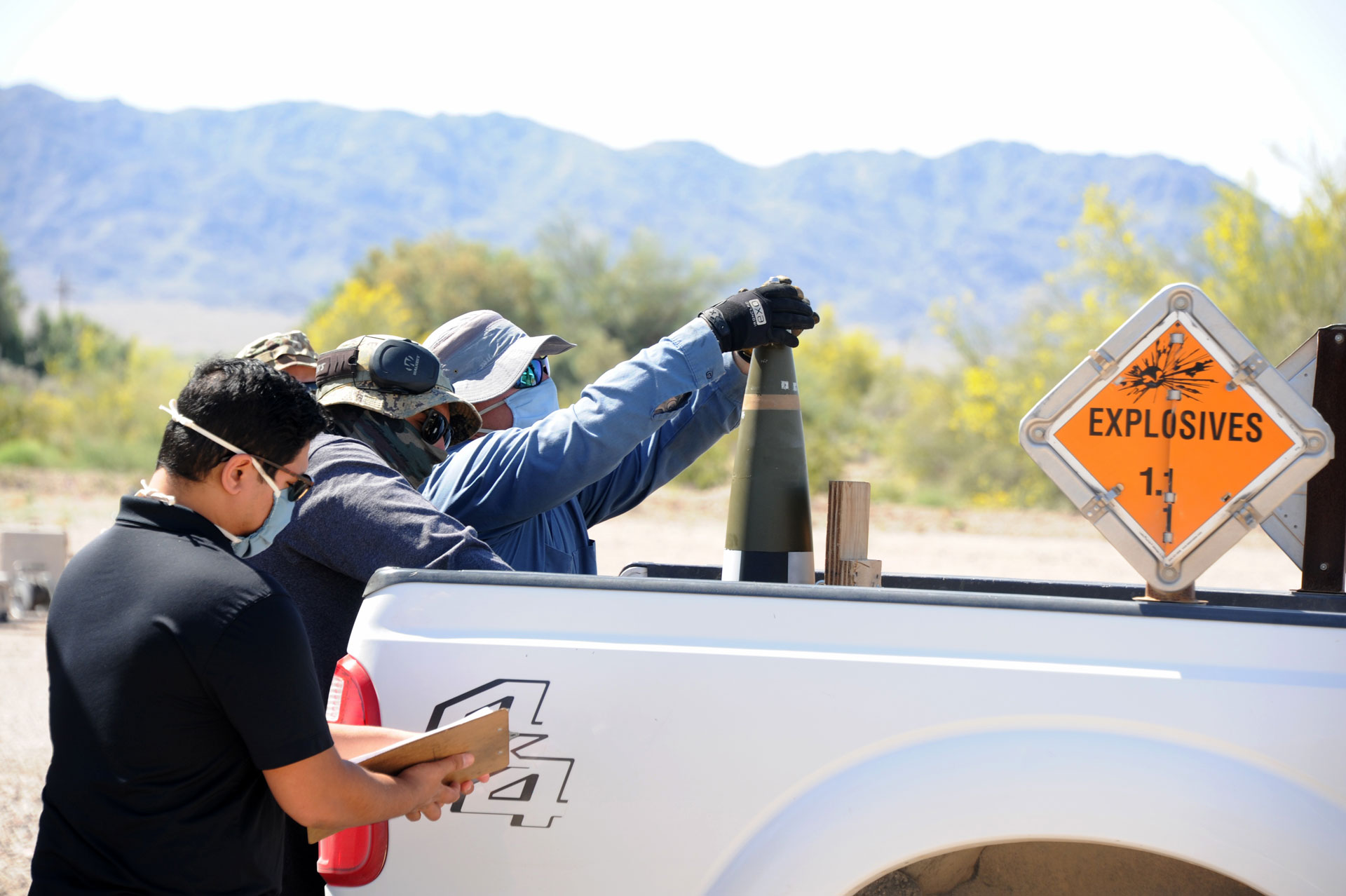
TEST PREP: The ERCA program aims to field systems capable of accurately firing at targets more than 70 km away, a dramatic increase over the 30 km a currently fielded 155 mm howitzer shell is capable of when fired at top zone with rocket assistance. (Photo by Mark Schauer, Yuma Proving Ground)
GOOD MADE BETTER
The Excalibur 70 km demonstration is one of many steps to regaining U.S. supremacy in cannon artillery by 2023. For more than 15 years, the M982A1 Excalibur projectile has been the premier precision artillery munition in the U.S. arsenal. The projectile’s reliability, robust structural design and the ability to course correct while maintaining both precision and accuracy were leveraged to achieve 70 km range during the test.
Throughout initial development and multiple years of operational use, Excalibur subsystems were proven to be effective with the current 39-caliber gun systems in the M109A6/A7 Self-Propelled Howitzer and M777A2 Towed Howitzer fleets. However, the increased pressure to achieve the muzzle velocity required for 70 km range from the longer 58-caliber ERCA cannon created harsher environments. As a result, the major focus became maintaining flight stability and safety.
“Testing in late 2019 revealed that the Excalibur warhead had sufficient margin to survive this harsher gun launch environment,” said Gibbs. He went on to say, however, “the team learned that the new firing conditions had reduced or eliminated some of the structural capacity due to increased loads at the subsystem and component level.”
U.S. government and industry engineering teams collaborated in support of the campaign of learning to analyze the individual subsystems’ operating margins, structural integrity and safety margins in order to ensure that the demonstration would be safe and effective in the new ERCA system. With support from the Munitions and Weapons Division at the U.S. Army Test and Evaluation Command Yuma Test Center, PM CAS and the Combat Capabilities Development Command – Armaments Center, along with Excalibur manufacturer Raytheon, its subcontractors and other industry partners, completed the necessary development and testing to reduce the risk and make the Excalibur 70 km demonstration possible.
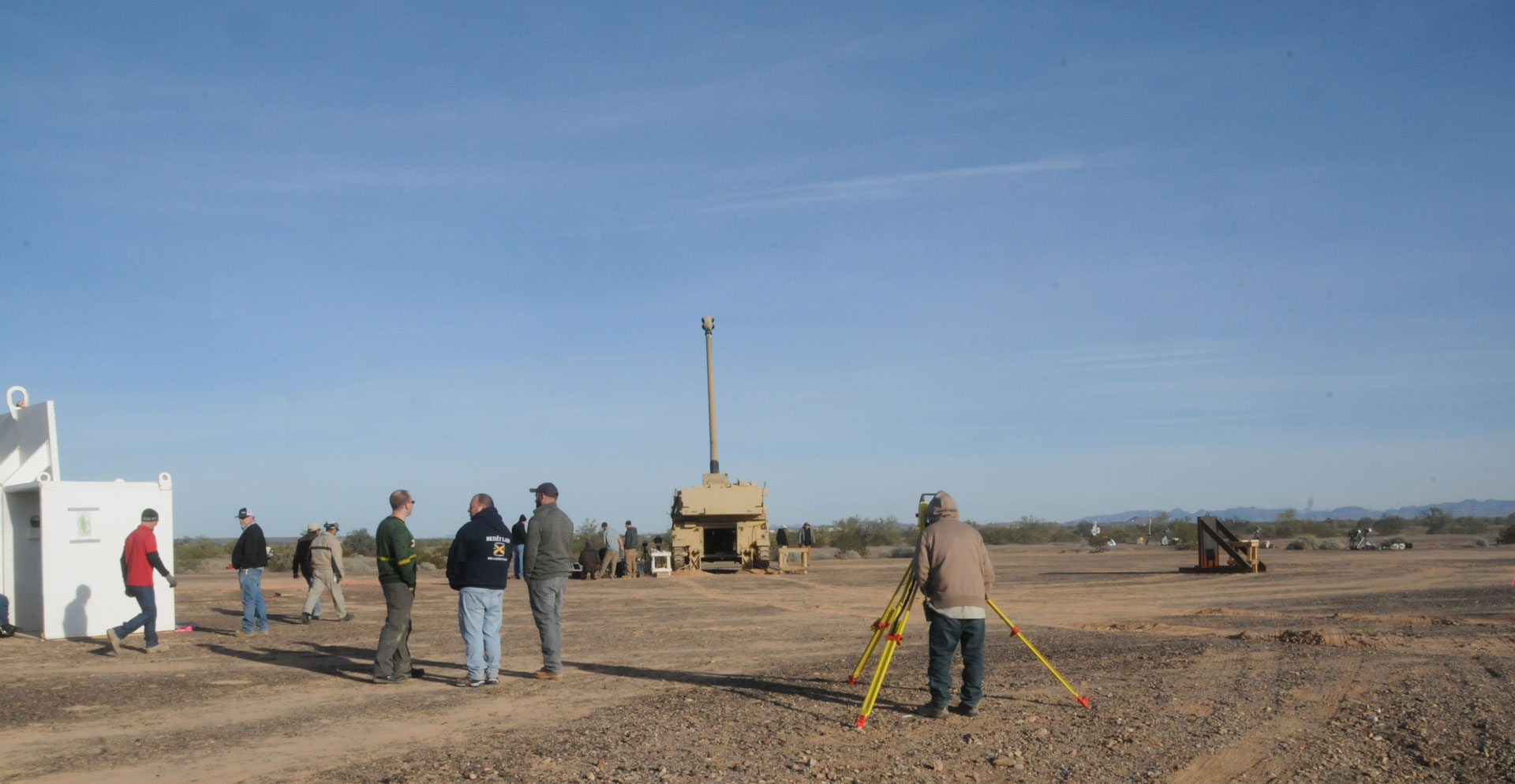
SAFETY FIRST: A large test crew worked on the firing event in December. Every measurement and detail is checked before firing by the test crew—safety is paramount at Yuma Proving Ground. (Photo by Ana Henderson, Yuma Proving Ground)
CONCLUSION
“Today’s demonstration marks a significant step forward in filling a capability gap in our Army of accurately reaching out to 70 km with cannon artillery. It’s the product of tremendous teamwork and initiative by multiple organizations and our industry partners to bring new technology to our artillery forces and regain overmatch with our adversaries,” said Brig. Gen. John Rafferty, Long Range Precision Fires Cross-Functional Team director.
By leveraging the robust design of the current Excalibur, a GPS coordinate-seeking projectile with an average miss distance—how far from the target the round detonates—of less than two meters, Excalibur also represents a low-investment, high-payoff approach to meeting objectives in support of the Army’s top modernization priority, long-range precision fires.

SUPERCHARGED: A Soldier carries XM654 Supercharge propellant. (Photo courtesy of Picatinny Arsenal)
For more information on Excalibur, go to https://jpeoaa.army.mil/jpeoaa/.
COL. THOMAS JAGIELSKI is the product manager for Precision Attack Cannon Munitions. His responsibilities include management of the M982 Excalibur and the development of cannon-delivered area effect munitions, which is a replacement for dual purpose improved conventional munition. He has an MBA from Texas A&M University-Central Texas and a B.S. in chemistry from the University of Arizona. He is certified Level III in program management and Level II in test and evaluation.







